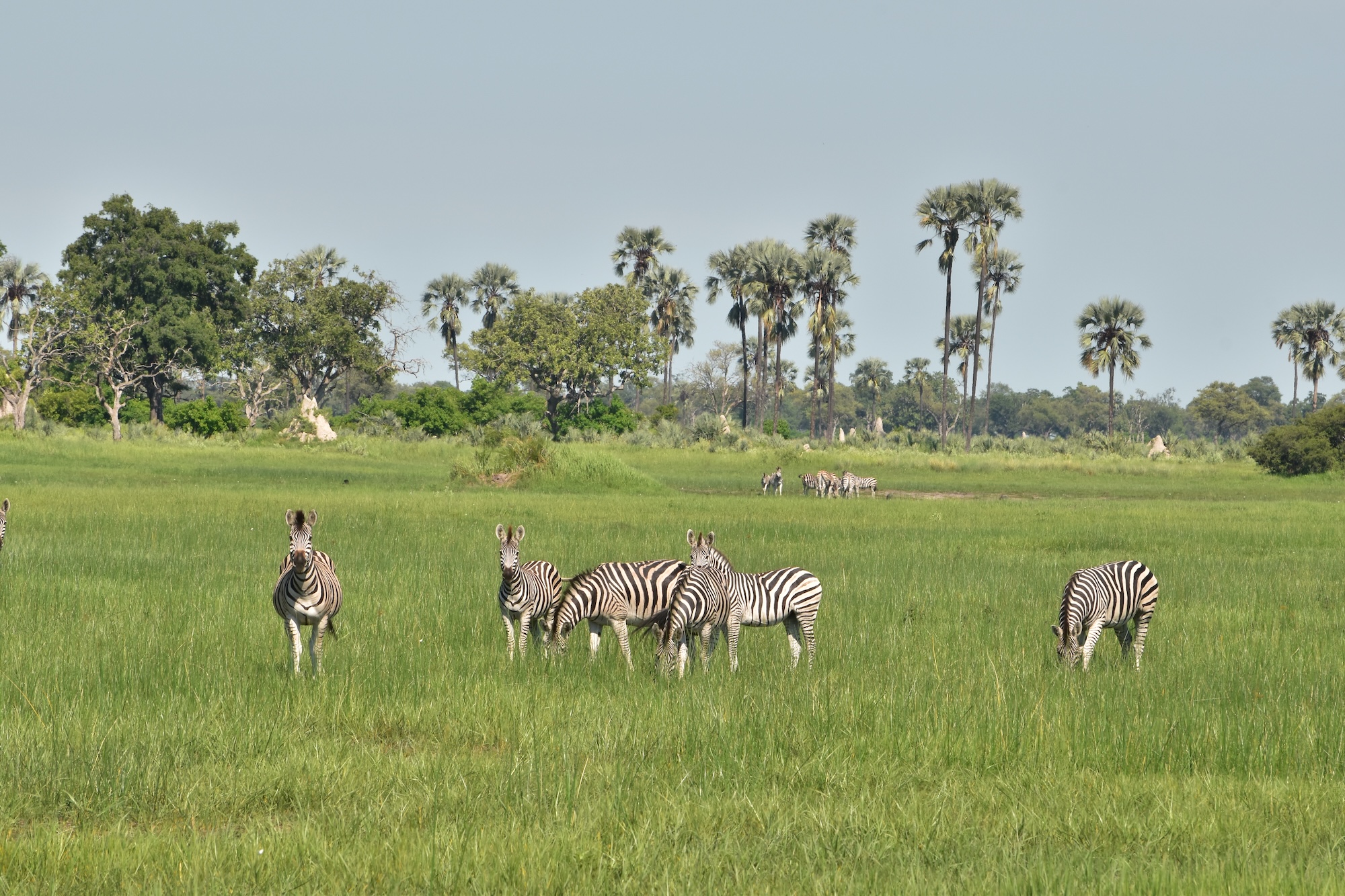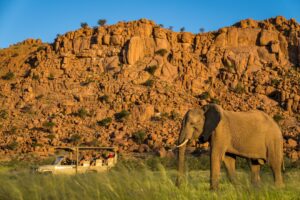
For a classic safari experience to Botswana, we’d normally recommend a visit during the dry season, from around April to the end of October. Then the lush waterways of the Okavango contrast with their arid Kalahari surroundings landscape, the sky is usually blue with few clouds and, as the season progresses, the wildlife congregates around the available water. This is peak season for travel, and when we’d recommend first-time travellers to Africa to visit.
However, if you’ve already been to Africa in the dry season, especially to Botswana, travelling again during the wet season is fascinating: it feels like being introduced to a different side of an old friend. It’s a time of year that our team often travel, with many memorable encounters and experiences.
Highlights of Green Season Botswana
- Best time of year for wildlife viewing at the Nxai and Makgadikgadi pans
- The zebra migration – the longest migration in Africa
- Birthing season and good opportunities to watch predators in action
- Excellent birdwatching, with the possibility to see 100 to 200 bird species in a single day
- Clear and spectacular lighting for photography
- Fewer travellers around, with better availability and rates
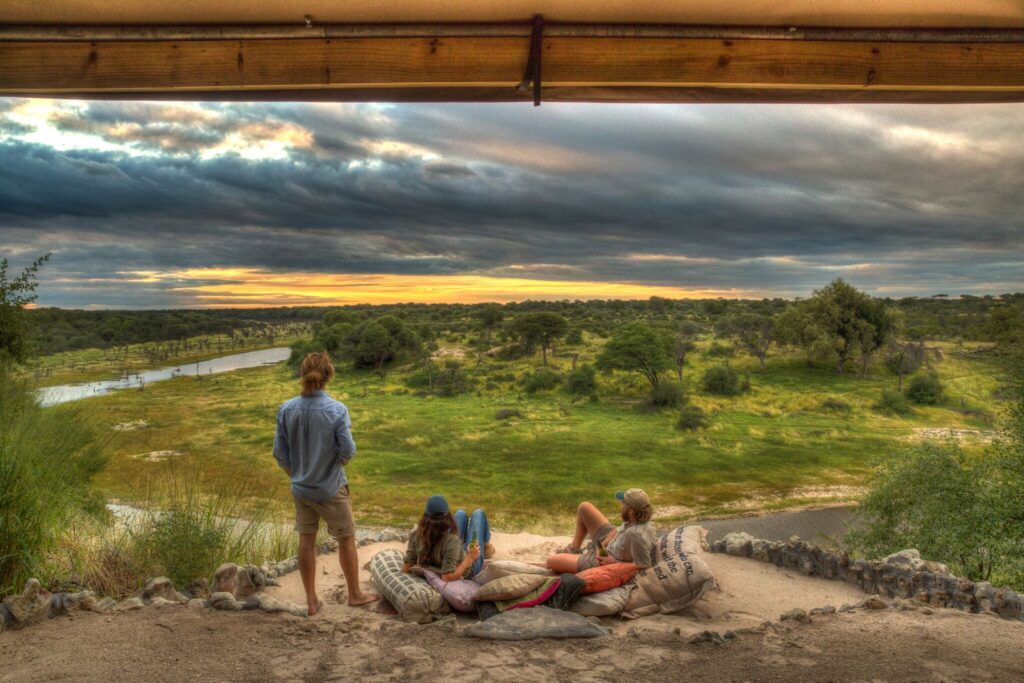
The rains down in Africa…
The ‘green season’ in Botswana refers to the rainy season, which usually lasts from December to March. The rain is sporadic, with afternoon thunderstorms common. Although these usually pass quickly, they are an experience: an approaching storm accompanied by lightning is a spectacular sight to behold. Fortunately, these storms rarely stop visitors from doing anything.
Much of Africa has thick, rich ‘black-cotton’ soils which, when wet, turn to treacle-like mud that is impassable for even the strongest 4WD. However, Botswana has a real advantage when it rains as most of the country stands on the Kalahari’s sands – which drain well and form a good solid base, even when submerged. So here you can drive all year: rain rarely stops play for long.
Across Botswana, the rainwater feeds rampant vegetation while small clay ‘pans’, scattered throughout the bush, hold water across the landscape. Everything seems to come to life, from fish and insects to wildlife great and small. Birds don their breeding plumage as migrants arrive for the feast, and many species use this time of plenty to have their young.
Meanwhile, even though it’s the height of the local summer, the rain and clouds keep the temperatures down, making the experience more pleasant than during October.
In the heart of northern Botswana, the Okavango has its own rhythms. Most of its waters come not from the rainfall in Botswana, but from rain which falls on the river’s catchment area, in the Angolan Highlands. This takes months to reach the Delta – only arriving from about May, during the dry season. So while this is not peak season for going to the Okavango, the green season opens up other areas of Botswana which are at their best at this time of year.
From A(rid) to Z(ebra)
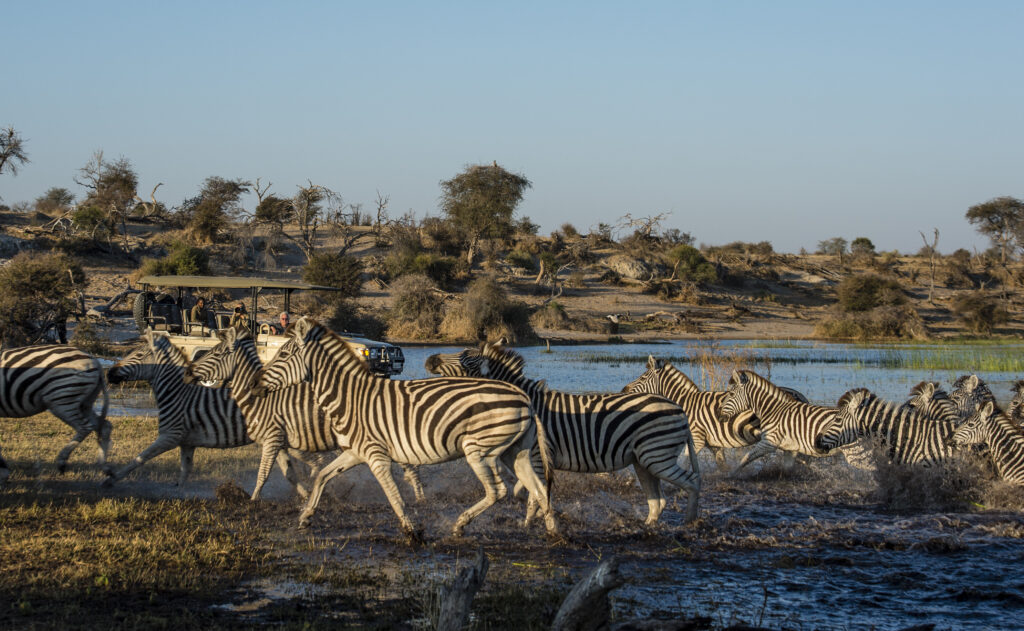
For much of the year, the great salts pans of Nxai and Makgadikgadi are austere and desolate. But when it rains, they come alive with lush grasslands and pools of water, hosting flocks of migratory birds, including flamingos, as well as the longest migration in Africa – zebras!
In fact, two different zebra populations migrate long distances – both at the same time of year. One moves from the floodplains of the Chobe River and surrounds south to Nxai Pan, while the other moves from the south-eastern part of the Okavango Delta to the Makgadikgadi Pans – both at around the same time of year. Over the period of a few weeks, the area of these pans becomes home to thousands of zebras, covering the landscape, attracted by the water and lush grass in the surrounding area. With other herd animals also congregating in the area, it is wonderful to see this normally arid landscape transformed into a green haven during the rainy season.
The ample water and riotous vegetation mean that this is also an ideal time for many animals to give birth – so the young animals are a real attraction, and not only for visitors: predators are drawn to the herds and there’s often good chances to see them in action.
Something for both shutterbugs and twitchers
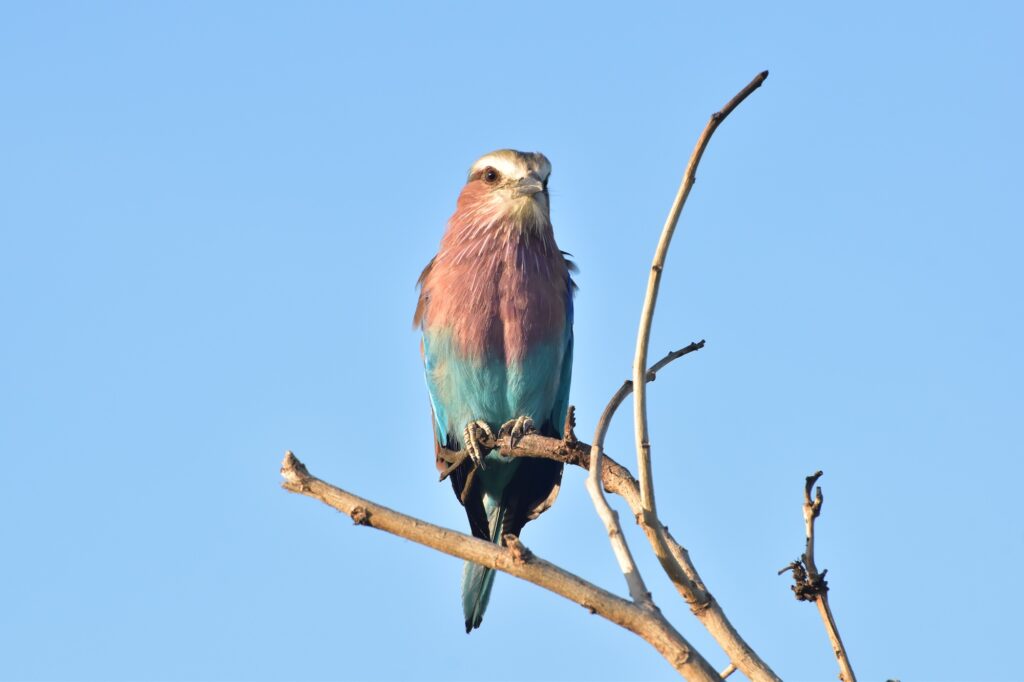
If you enjoy photography, this time of the year offers something special. The rains clean the dust from the air, making the light the clearest and most spectacular of the year. The vegetation is also greener and brighter, and the animals and birds in better condition. The price for this is the risk of clouds and grey skies, though when the sun breaks through the clarity and contrast in the light make for dramatic photo opportunities.
The rainy season is the best time of year for birdlife, with an influx of migrant birds adding to the already large variety of permanently resident species. It wouldn’t be uncommon to spot 100 different species in a 24-hour period, though experienced birdwatchers might manage 2–300 species in the same timeframe! Expect to see weavers, red bishops, yellow-billed storks and paradise whydahs in breeding plumage, and flamingos turning the landscape pink if the rains have been good.
The rain on the plains
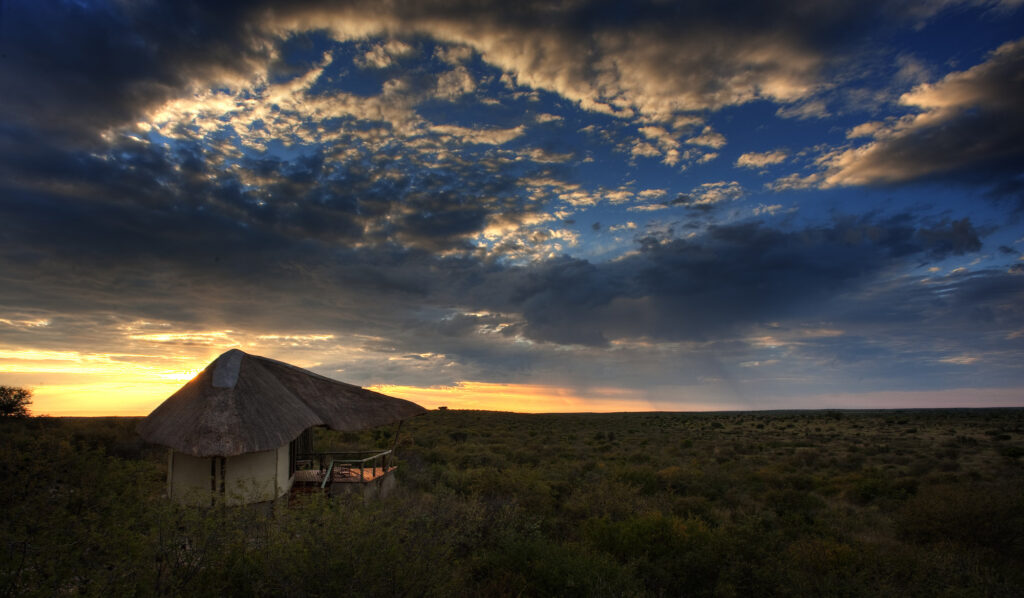
The vast Central Kalahari Game Reserve protects over 10% of Botswana. That’s over 50,000km² of Kalahari – an area larger than the Netherlands and about twice the size of Massachusetts – with virtually no natural sources of water.
Much of the resident wildlife here can survive with little water, so waterholes have limited appeal for most species. However, when it rains here the flat, calcrete pans between the lines of fossil sand dunes flush green with new grass, attracting huge herds.
Curiously, in our experience, they often seem to congregate in herds of just one species. We’ve seen pans with thousands of springbok, but no other antelope. Then others with large numbers of oryx, on their own. Then remarkable numbers of giraffe – but neither springbok nor oryx present.
This makes the period at the end of the rains, between about February and May, the best time of year for wildlife viewing in the Central Kalahari – and a stand-out of Botswana’s impressive green season.
The Expert Africa experience on the ground
Anton Walker, Senior Africa Specialist at Expert Africa, returned from a Botswana research trip in January 2024; here are his comments about visiting during the green season:
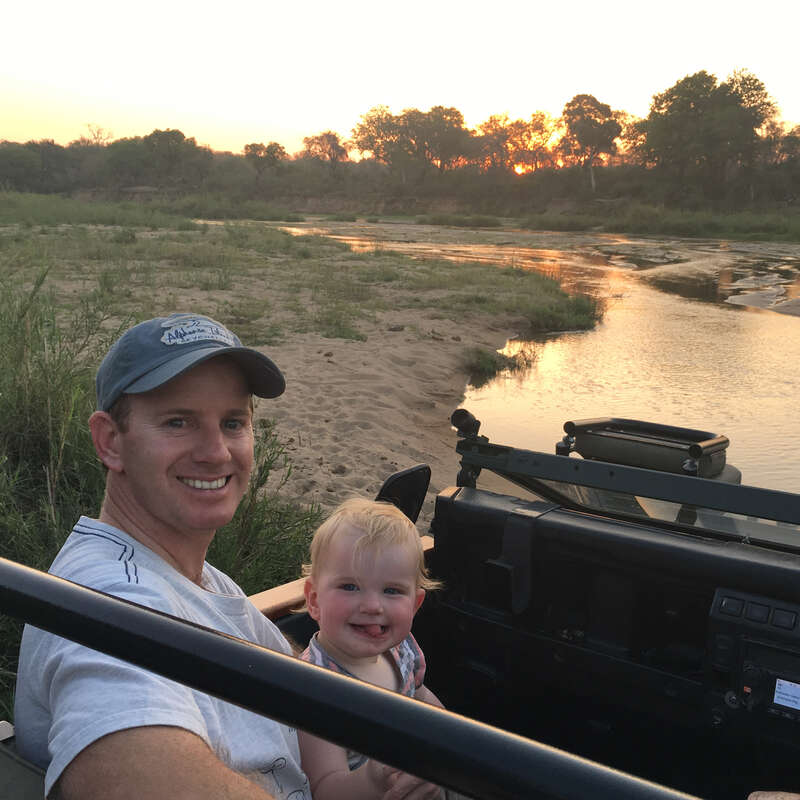
Few travellers go on safari in the green season but having just returned from an amazing 16 days on safari in Botswana in January – I’m left wondering why.
The abundance of wildlife was a revelation. My tally of sightings included six herds of sable; many rhino; a dozen leopards; three cheetah; seven packs of wild dogs and lion on most days – including three mating pairs! As a keen birder a tally of 236 species meant there was never a dull moment, especially as many were in breeding plumage.
There were so few visitors that most of these sightings were ours alone, shared with only my guide and the wilderness.
I had countless highlights, from lechwe clashing horns in shallow floodplains near Duba Plains Camp, sunlit spray everywhere; to quietly following a female leopard as she padded to her tiny, new cub – so young that it still had baby grey blue eyes. The drama of survival often played out in front of us, and I can’t forget the stand-off between wild dogs and wildebeest at Pom Pom Camp – the dogs probing for weaknesses in the wall of horns, only to be repulsed again and again.
As ever in the green season, everything seemed alive and the smaller wildlife often stole the show. A brilliant guide at the new Sitatunga Private Island led me on a fascinating mokoro safari teaching me the bird calls on the way. This was enlightening as I was woken at dawn to a pair of Pel’s fishing-owls calling outside my room. Every evening as the sun was setting, we were serenaded by an orchestra of tiny, bell-like frog calls – from bubbling cassinas, bright black & red banded rubber frogs, tinker frogs and many others. My favourite private frog orchestra happened while I was at Duke’s Camp. Here we challenged ourselves to find these ventriloquists!
The weather had been a concern, but it seldom disrupted our activities. Five of my days had some rain. Only once did the rain last longer than 30 minutes. On a couple of days, I did don a poncho to stay dry, but the vehicles had roofs. During our only rainy morning drive we were treated to a rare sighting of a sitatunga and her lamb – something my guide had never seen in 10 years of guiding, as they are usually only seen from the boats.
Botswana’s vast landscape means the skies help frame the wilderness, particularly in the green season as you get to watch the storm clouds build, more often than not passing by, but leaving you in awe. One evening at Shinde Camp a pair of male lions set the scene, the atmosphere charged with distant lighting and rolling thunder. Knowing a storm was coming the lions roared repeatedly, as the approaching storms grew darker and more ominious. But by the time the rains arrived, we were tucking into a Botswana beef filet in camp.
What I loved the most about a green season safari was just how alive the bush felt. In the dry season the animals are in survival mode. In the green season the wildlife is in celebration. It is infectious.
If you’ve been inspired and want to find out more, give us a call or enquire now to speak to an expert.
*A version of this article originally appeared in a Special Edition of the Bush Telegraph newsletter published in February 2024. You can read our recent newsletters and sign-up to receive these in your inbox on our Bush Telegraph newsletter page.
